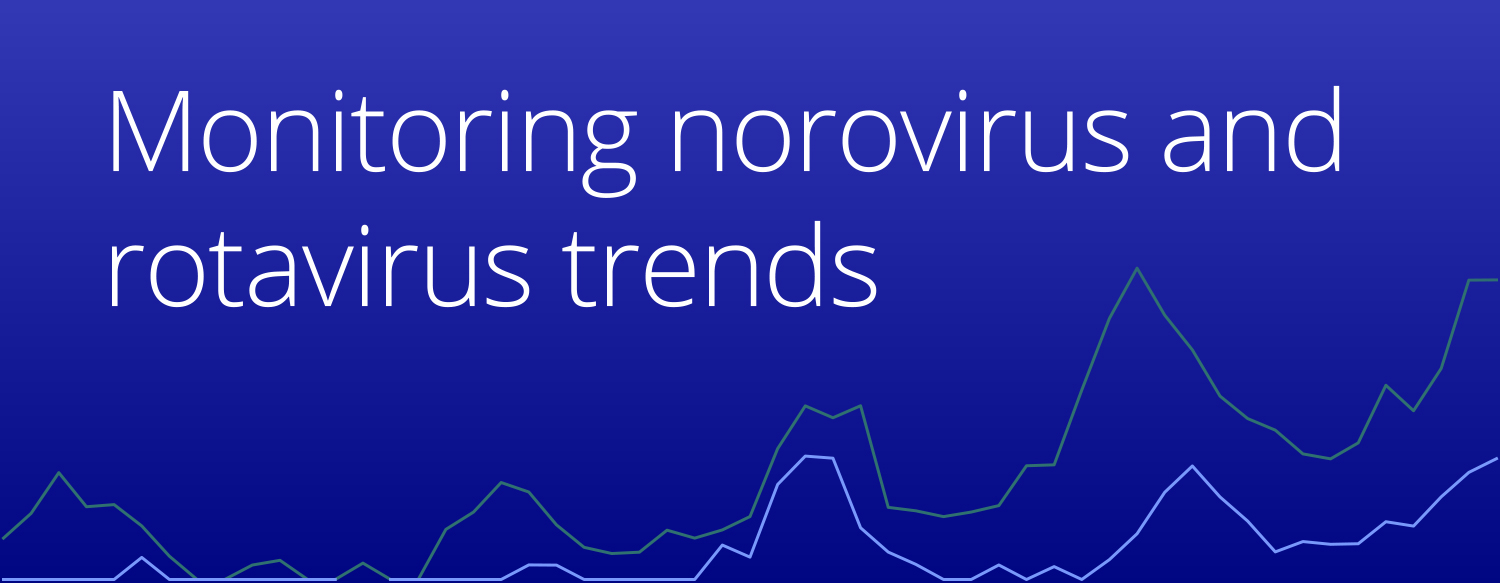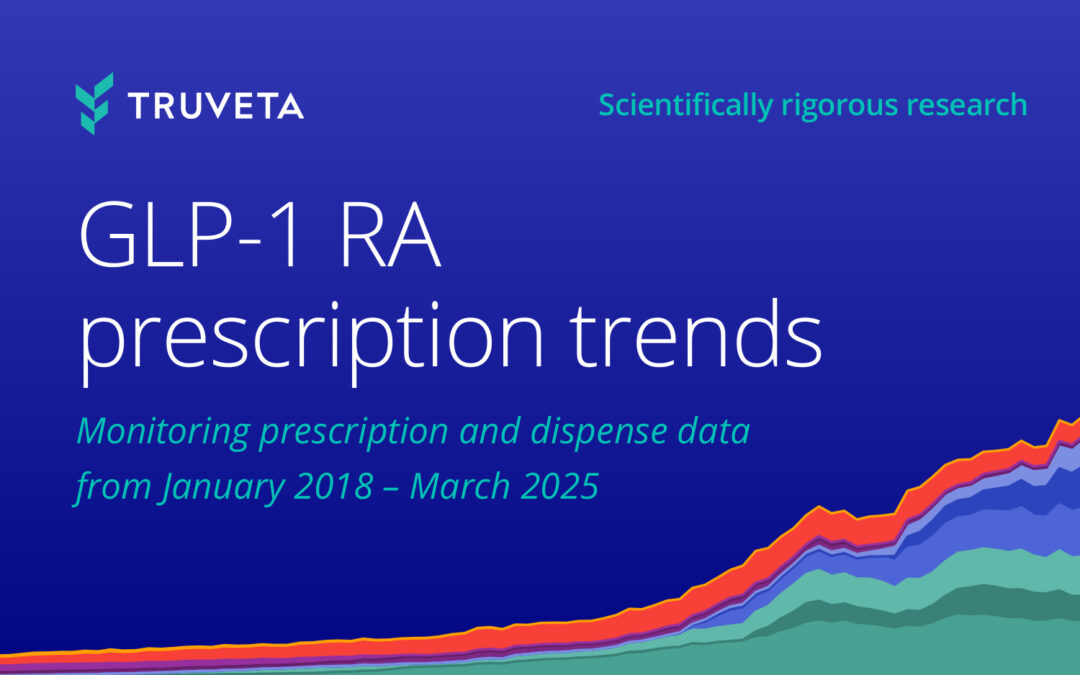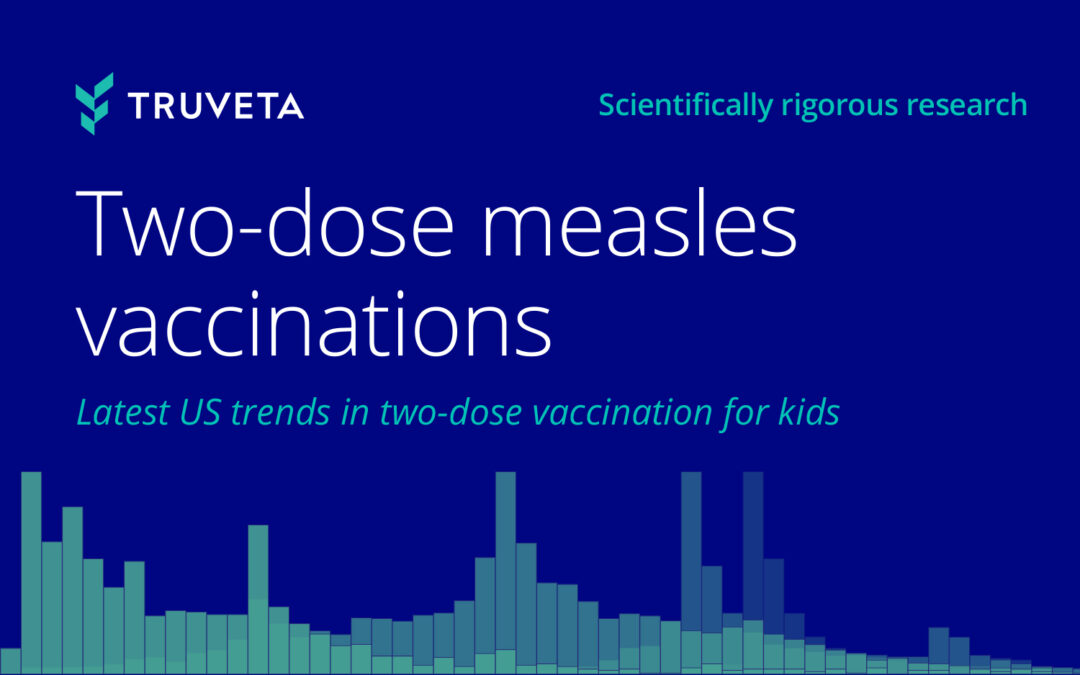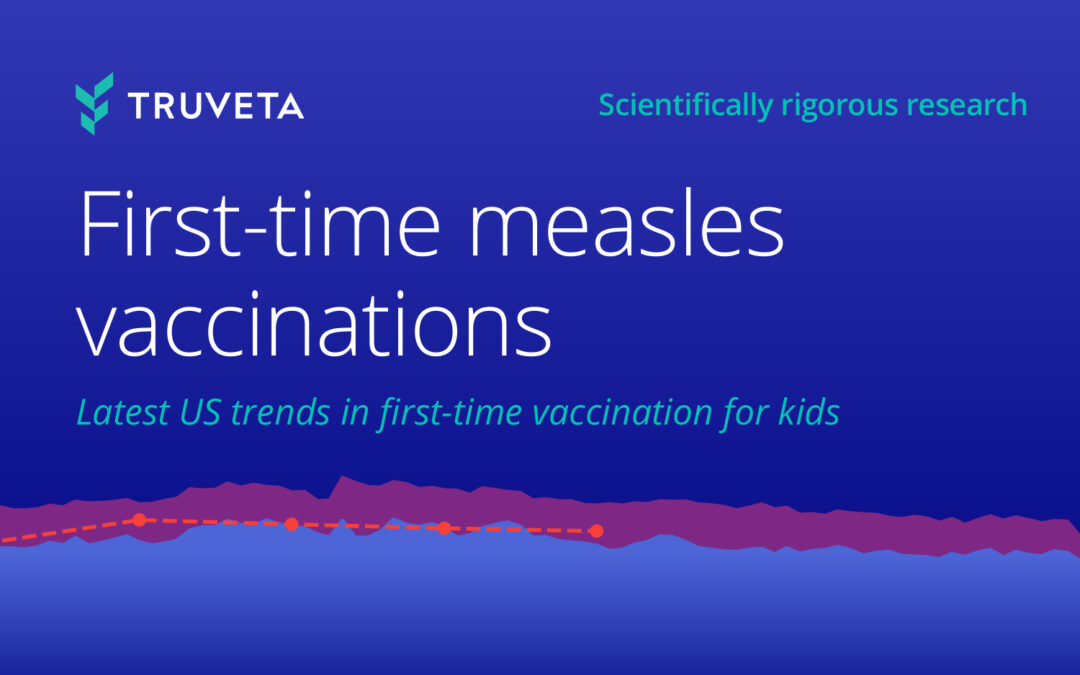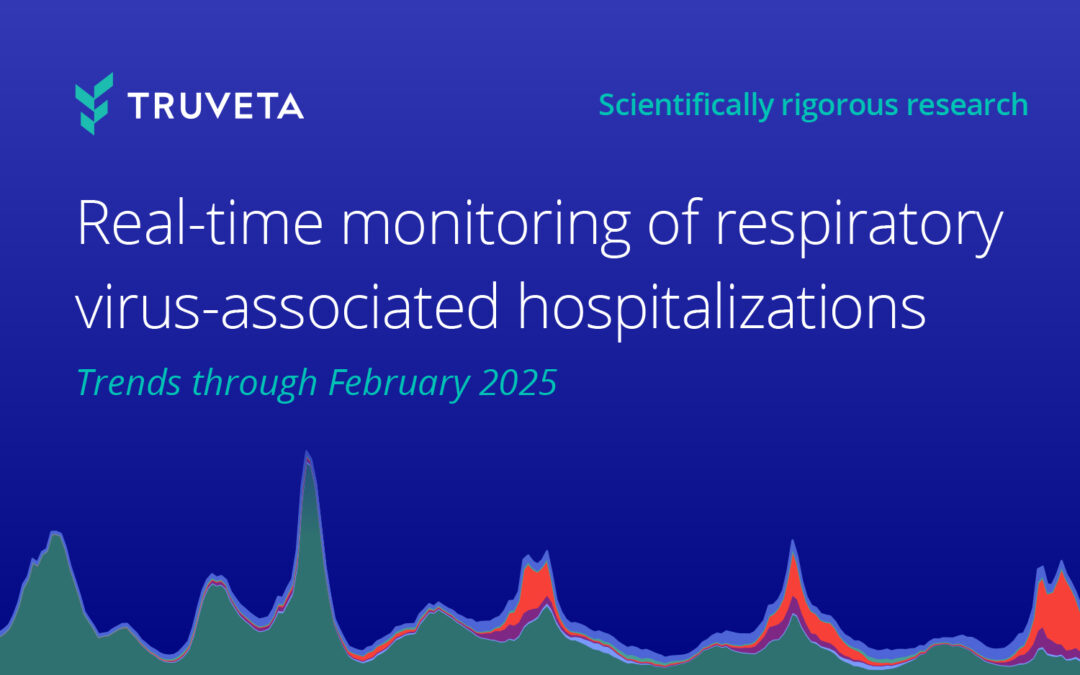- Norovirus and rotavirus are significant contributors to gastrointestinal infections worldwide, creating risk for patient populations and strain on the healthcare system.
- Truveta Research evaluated trends in norovirus- and rotavirus-associated hospitalizations overall and for two populations at higher risk: infants and children 0-4 years of age and adults aged 65 and over.
- The study found that hospitalizations associated with norovirus and rotavirus accounted for 0.21% of all hospitalizations in April 2024 (+5.4% from March 2024). Infants and children aged 0-4 years old experienced the highest rate of norovirus- and rotavirus-associated hospitalizations, accounting for13% of hospitalizations for this age group in April (+11.5% from March 2024). The rates of hospitalizations for adults aged 65 and older decreased from March 2024 to April 2024.
Few sources regularly monitor hospitalizations associated with the two most common gastrointestinal viruses: norovirus and rotavirus. Truveta Research has created a quarterly viral gastroenteritis monitoring report to supplement the surveillance data provided by the CDC by describing monthly trends in the rate of hospitalizations overall and for norovirus and rotavirus. This information can inform decisions about public health, clinical care, and public policy.
Because Truveta Data provides the most complete, timely, and clean de-identified EHR data, including full patient medical records, notes, and images, linked with claims, SDOH, and mortality data for more than 100 million patients across the US, we can show the latest trends in these viral gastroenteritis-associated hospitalizations, including valuable insight into two high-risk populations: infants and children (age 0-4 years old) and older adults (age 65 and over).
This blog provides a snapshot of the key findings with data through April 2024 in the report specific to the overall population across both norovirus and rotavirus, as well as for two high-risk populations: infants and children (age 0-4 years old) and older adults (age 65 and older). For the full analysis – inclusive of demographics, comorbidities, and overall trends in virus-associated hospitalizations across all age groups for each virus, see the complete report on MedRxiv or explore the data directly within Truveta Studio.
Key findings: Trends in viral gastroenteritis-associated hospitalizations and test positivity
Using a subset of real-world electronic health record (EHR) data from Truveta, a growing collective of health systems that provide more than 18% of all daily clinical care in the US, we identified 5,533 hospitalizations of 5,424 unique patients who tested positive for a monitored virus between October 01, 2019 and April 30, 2024.
Additionally, we included 238,344 lab results across 113,219 unique patients of which 10,811 were positive between October 01, 2019 and April 30, 2024.
Overall population trends
Hospitalizations associated with norovirus and rotavirus accounted for 0.21% of all hospitalizations in April 2024 (+5.4% from March 2024).
The combined test positivity rate of these two gastrointestinal viruses was 8.4% in April 2024.
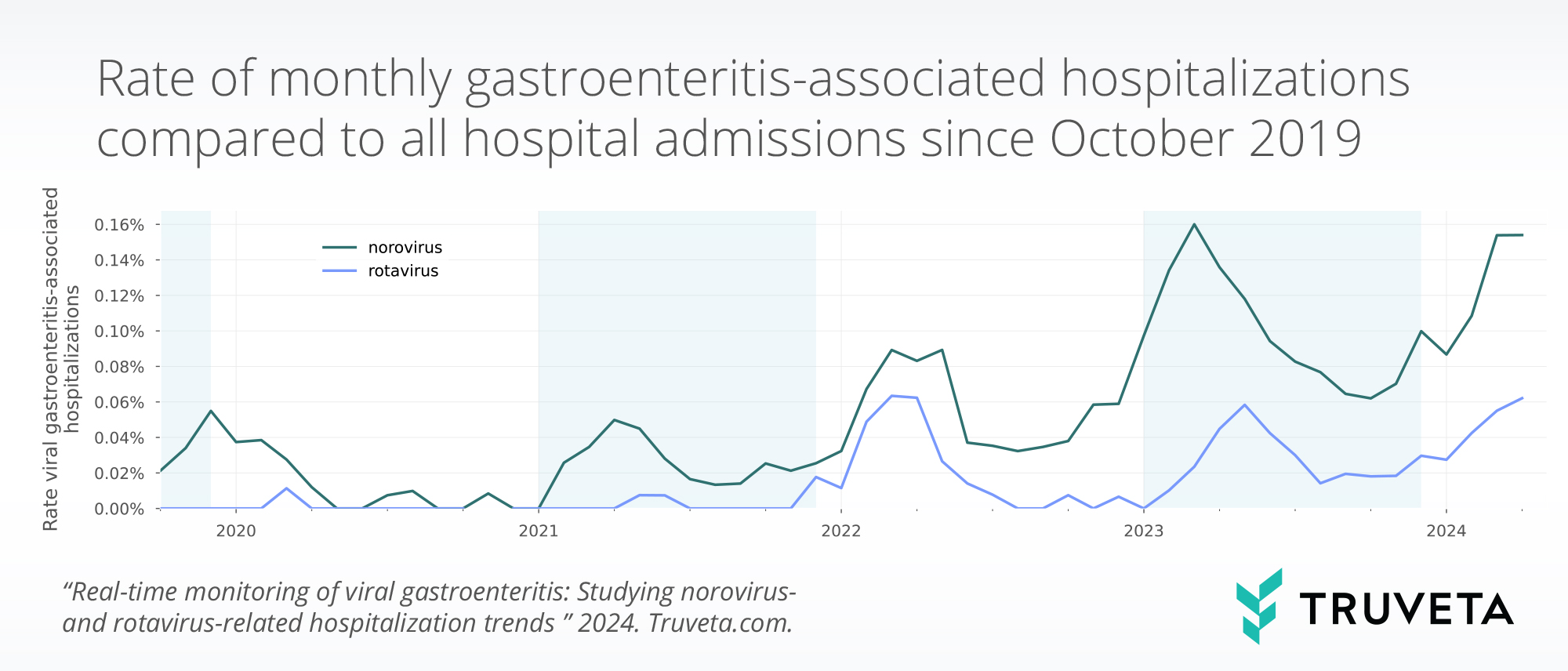
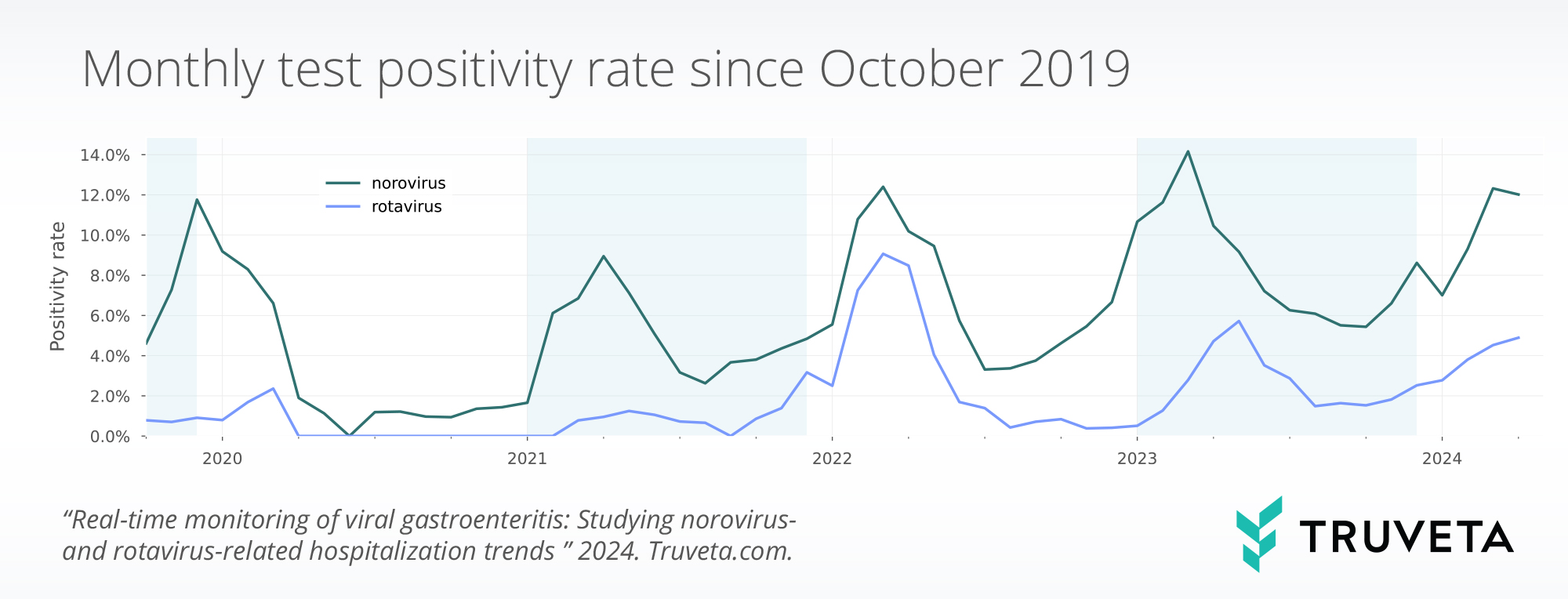
Infants and children (age 0-4)
For the pediatric population (0-4 years old), the hospitalizations associated with these two enteric viruses accounted for 0.13% of all hospitalizations in April (+11.5% from March 2024).
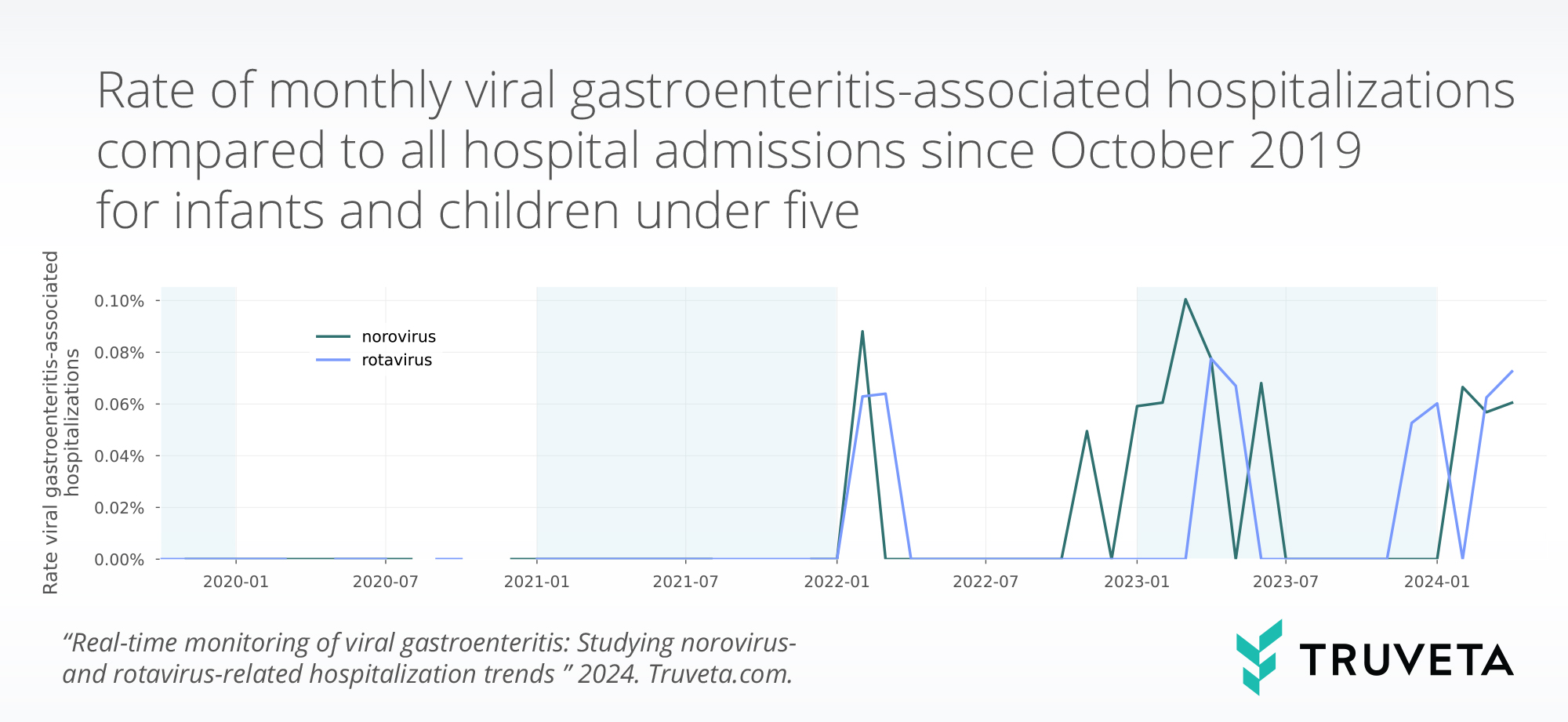
The test positivity rate for the two gastrointestinal viruses was 18.4% for the month of April in this age group.
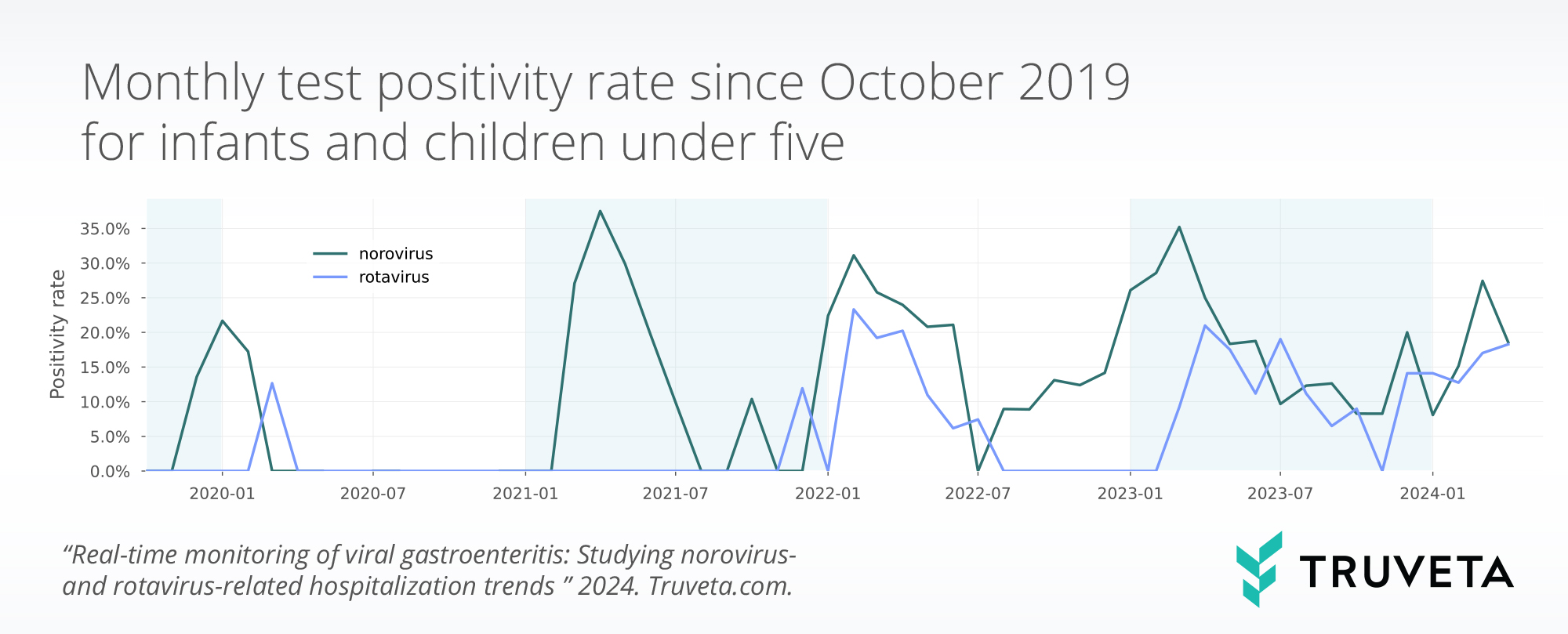
Older adults (age 65 and over)
In the population over 65 years of age, hospitalizations associated with these gastrointestinal viruses accounted for 0.22% of all hospitalizations in April 2024 (-4.8% from March 2024).
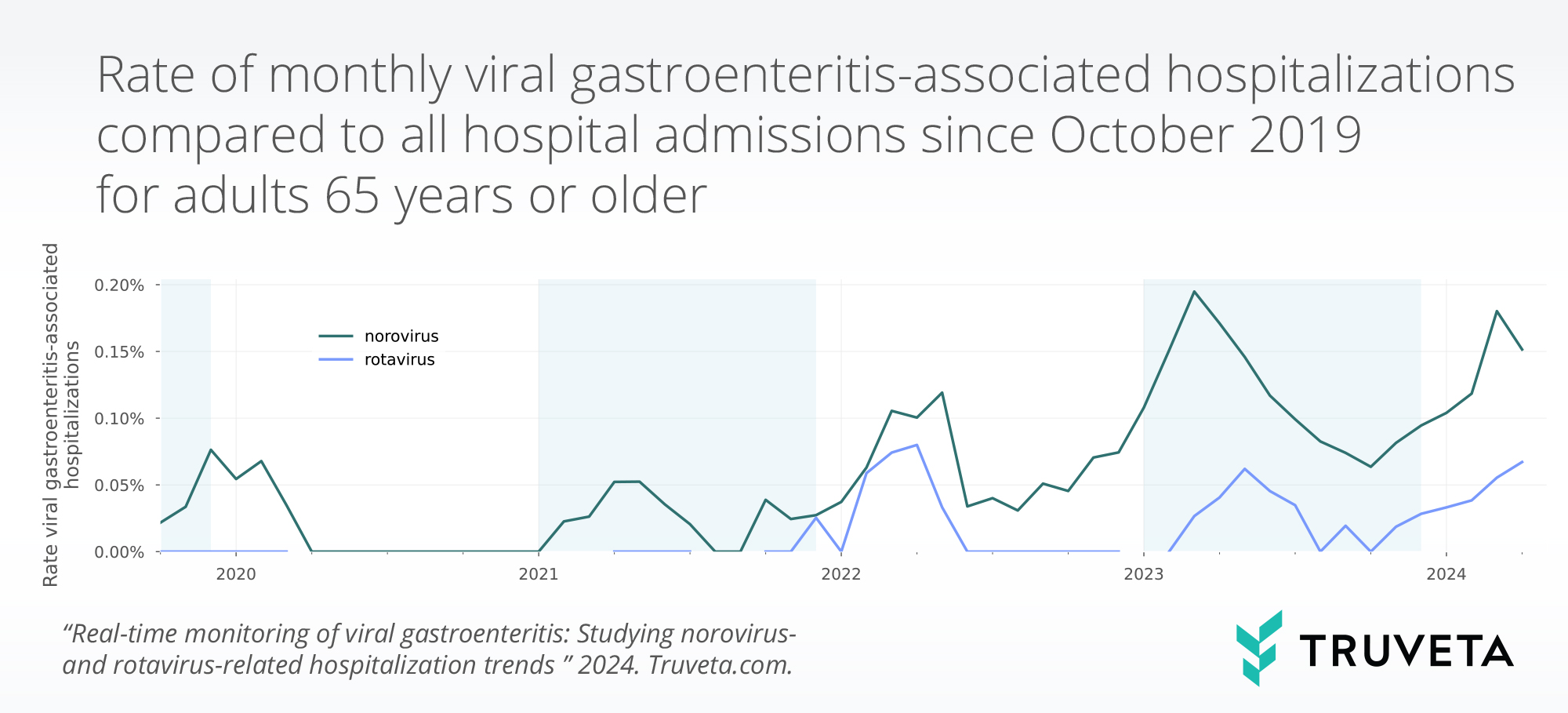
The test positivity rate for these gastrointestinal viruses was 6.0% for the month of April in this age group.
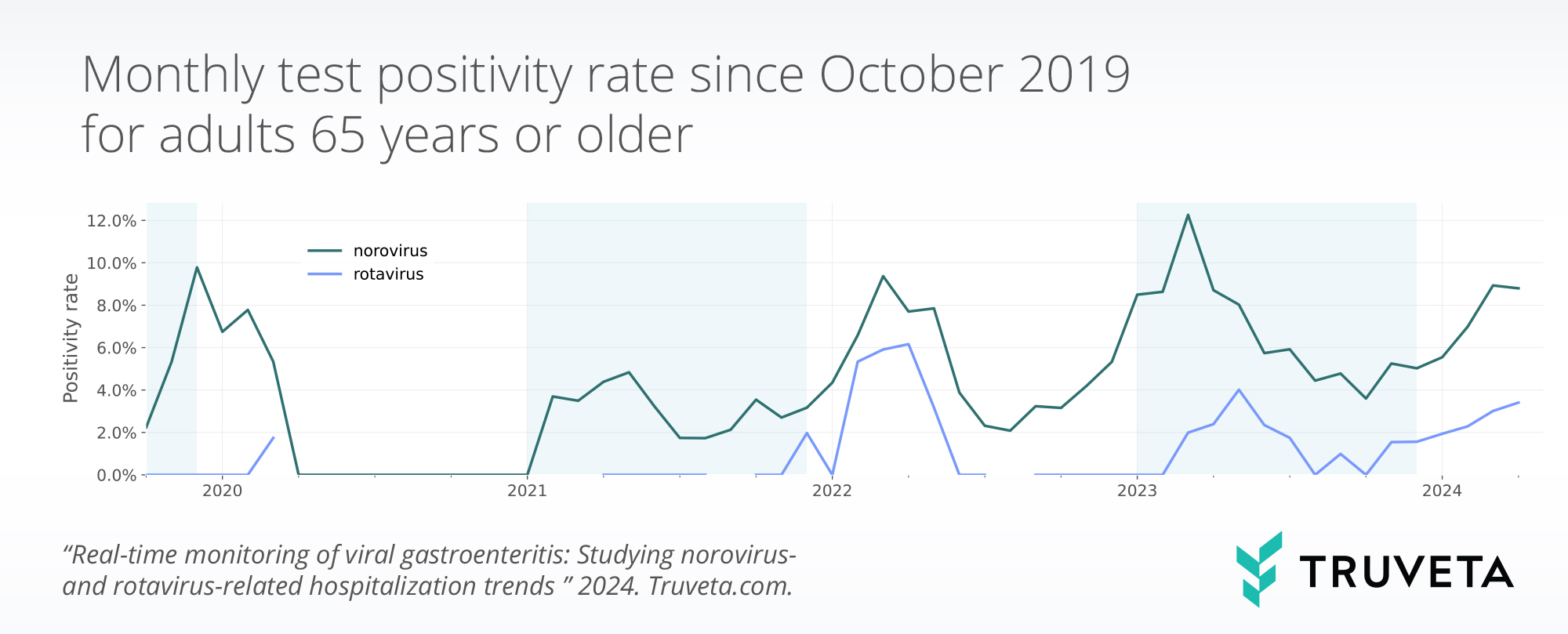
Discussion
It is important for public health experts and clinical providers to understand the trends in these infections to inform decisions about public health, clinical care, and public policy. Connecting population-level trends with granular clinical information available in Truveta Studio can be very useful to understand which populations are most impacted and may require additional support.
We will continue to monitor viral gastroenteritis-associated hospitalizations overall and for higher risk populations.
Again, see the complete report on MedRxiv or explore the data directly within Truveta Studio.

